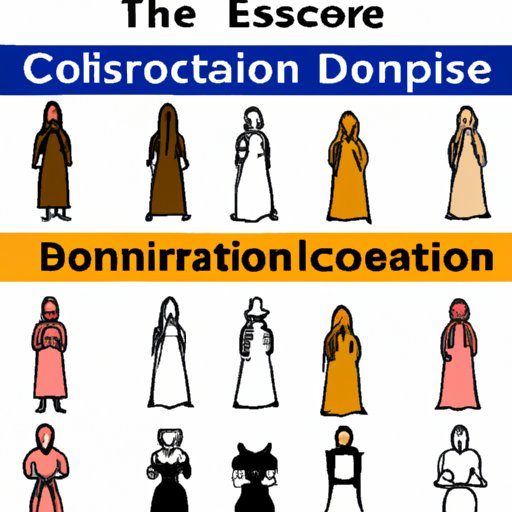Introduction
A dress code is a set of rules or regulations governing what type of clothing is appropriate for a given situation. Dress codes are often used in workplaces, schools, and other institutions to ensure that everyone is dressed appropriately for the occasion. The purpose of this article is to explore the history of dress codes, from when they were first invented to how they have evolved over time. It will also examine their impact on society throughout history.

Historical Overview of Dress Codes
It is difficult to pinpoint exactly when dress codes were first invented, as clothing has been used to convey social status and other messages since ancient times. However, it is believed that the earliest known dress codes were created in Ancient Egypt, around 3,000 BCE. These dress codes were used to differentiate between the upper classes and the lower classes, with the wealthy wearing finer fabrics and more elaborate clothing than the poorer citizens.
The ancient Greeks also had a system of dress codes, which was based on gender roles. Men wore tunics, cloaks, and sandals, while women wore ankle-length gowns and head coverings. During the Middle Ages, dress codes became even more structured, with specific garments associated with certain professions, such as lawyers and doctors.
In the 17th century, dress codes started to become increasingly formalized, with the emergence of sumptuary laws. Sumptuary laws were designed to regulate what types of clothing people were allowed to wear, based on their wealth and social class. This was done in an effort to reduce the amount of luxury goods being consumed by the wealthy, and to prevent the lower classes from imitating the higher classes.

Exploring the Evolution of Dress Codes from Ancient Times to Today
Over the centuries, dress codes have continued to evolve, becoming more relaxed in some areas and more formal in others. In the 19th century, for example, the introduction of new technologies such as the sewing machine and mass production allowed for the creation of more affordable clothing, making fashionable clothing accessible to a wider range of people. This led to a greater level of acceptance for more casual styles of dress.
Social norms have also played a role in the evolution of dress codes. As societies have become more accepting of different lifestyles and ideologies, so too have their dress codes. For example, when women began to enter the workforce in larger numbers during the 20th century, there was a greater push for more professional attire, such as suits and skirts.
Religion has also had an influence on dress codes throughout history. Many religions have specific guidelines regarding what types of clothing are acceptable, and some require adherents to wear certain garments, such as veils, turbans, or yarmulkes. In many cases, these religious dress codes are still observed today.
Examining the Impact of Dress Codes on Society Throughout History
Dress codes have had a significant impact on society throughout history. They have served as a way to distinguish between classes, professions, and religions, as well as providing a sense of uniformity and conformity. Dress codes have also been used to promote certain ideals, such as modesty and respectability. In some cases, dress codes have been used as a form of social control, as those who do not adhere to the rules can be seen as deviant or rebellious.
Dress codes have also changed over time, reflecting the changing values and norms of society. For example, in the early 20th century, women’s fashion was heavily restricted, with long skirts and modest blouses being the norm. However, as society has become more liberal, so too have dress codes, with shorter skirts, sleeveless tops, and other more revealing styles becoming more acceptable.
Conclusion
Dress codes have been a part of human culture since ancient times, and they have evolved over the centuries to reflect the changing values and norms of society. They have been used to distinguish between classes and professions, as well as to promote certain ideals. Although dress codes may vary from place to place, understanding and adhering to them is an important part of social etiquette.
(Note: Is this article not meeting your expectations? Do you have knowledge or insights to share? Unlock new opportunities and expand your reach by joining our authors team. Click Registration to join us and share your expertise with our readers.)
